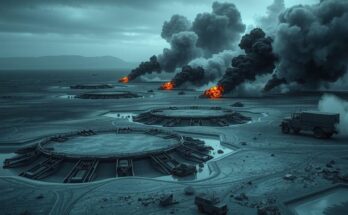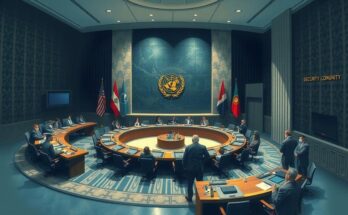This article provides an analysis of the United States’ dominant influence on global affairs, particularly in the wake of recent geopolitical shifts caused by conflicts in the Middle East. It discusses the challenges faced by both adversaries and allies of the U.S., the evolving situation in Lebanon, the Palestinian issue, and the implications of Iranian and Syrian dynamics in a rapidly changing environment.
The United States stands as the world’s preeminent economic powerhouse, recognized for its advanced technological innovations and strong military might. While it directs global affairs, America often demands that the rest of the world aligns with its perspectives. The election of a U.S. president resonates worldwide, impacting international relations and geopolitical stability, particularly under the leadership of influential figures such as Donald Trump.
Being an adversary of the U.S. bears significant challenges, exemplified by its swift resolution of conflicts without bloodshed, such as the Cold War’s conclusion against the Soviet Union. Historically, the U.S. has not hesitated to impose its will on leaders perceived as threats, as shown in Libya and Iraq. Despite setbacks, its economic and military resilience allows for rapid recovery and continued dominance on the global stage.
Ultimately, alliances with the U.S. can be equally complex and fraught with tension, forcing nations to navigate a tricky landscape of cooperation mingled with inevitable economic and political costs. While the U.S. holds the key to ending regional conflicts, such resolutions often come with strict conditions, particularly regarding its strategic alliance with Israel.
Recent events in Lebanon illustrate the profound effects of local and regional shifts post-earthquake, where even limited ceasefires can be undermined by persistent Israeli military actions. The changing balance of power indicates a weakening Hezbollah, alongside mounting public demand for diminished arms possession within Lebanon. Political leaders must contend with these realities, reflecting a shift in authority and expectations following the earthquake.
The capacity of American diplomacy, as expressed through envoy requests for new government formations, underscores the profound transformation occurring in the region. Although the Lebanese government under Nawaf Salam has gained both regional and international backing, it must now navigate pressures from multiple actors while pursuing stability.
Israeli Prime Minister Netanyahu contends that recent conflicts have irreversibly altered the Middle Eastern landscape, indicating that the resolution of the Palestinian issue and adherence to established international agreements will significantly shape future relations. The reality remains that any long-term stability will rely on negotiations grounded in mutual recognition and respect for borders.
The Iranian position is also under scrutiny as it seeks to recalibrate following recent upheavals. While Syria’s government appears to be re-entering the Arab political fold under President Ahmad Al-Sharaa, Tehran must address a challenging political environment where external pressures remain considerable. Trump’s overtures toward Iran signify potential avenues for dialogue amid ongoing regional tensions.
The Palestinian plight persists as a core issue, necessitating renewed focus on viable solutions such as a two-state arrangement that satisfies longstanding humanitarian aspirations. Achieving such outcomes is critical to alleviating conflict and fostering an environment conducive to economic and political stability, vital for the region’s progression toward peaceful coexistence once entrenched positions dissolve.
In conclusion, the geopolitical landscape surrounding the United States is marked by its immense power and the complex dynamics it creates both for allies and adversaries. As regional powers grapple with altered circumstances following recent conflicts, the necessity for open dialogue and pragmatic solutions, especially regarding the Palestinian situation, remains paramount. The path forward will require acknowledging diverse interests and fostering cooperation to ensure lasting stability in the Middle East.
Original Source: www.arabnews.com




